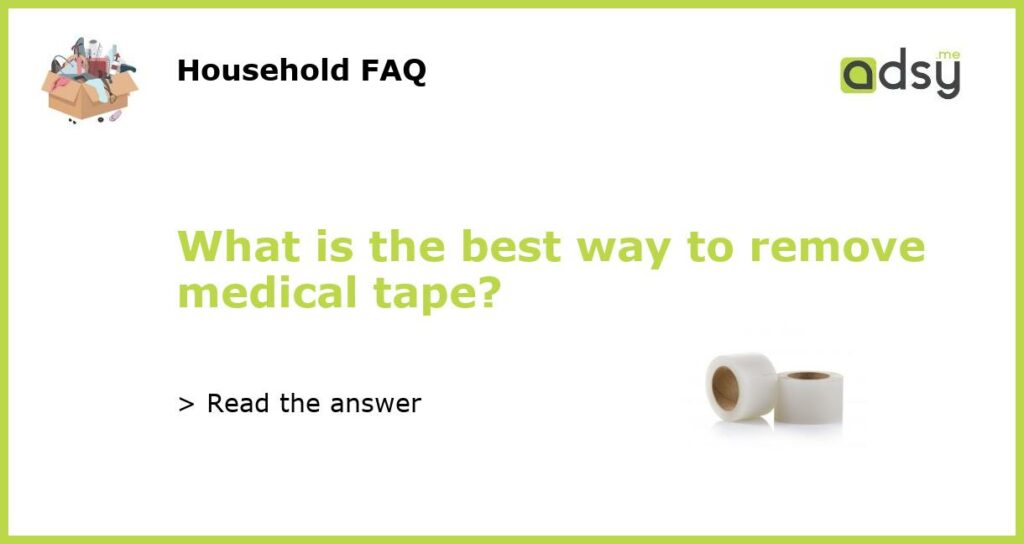Understanding the Importance of Proper Tape Removal
Medical tape is an essential tool used in healthcare facilities and households to secure wound dressings, catheters, and other medical equipment. However, improper removal of medical tape may cause pain, discomfort, and skin irritation, which can lead to more significant problems. It is crucial to know the proper way of removing medical tape to prevent these unwarranted side effects. In this article, we will explore the best ways to remove medical tape, ensuring the patient’s comfort and well-being.
The Basics of Medical Tape Removal: Start Slow and Steady
The first step in removing medical tape is to start slowly and carefully. Apply pressure to the skin next to the tape to prevent it from pulling on the skin. Gently peel back a small section of the tape, pulling it back towards the wound. If there is resistance, stop immediately and apply a small amount of oil or water to loosen the adhesive. Continue peeling the tape slowly, applying more water or oil if needed, until the tape is entirely removed. Never pull the tape off quickly or in one motion, as this may cause additional discomfort and damage to the skin.
The Best Way to Remove Sensitive Skin Tape: Use Adhesive Remover Sprays
Patients with sensitive skin may experience more significant discomfort when removing medical tape. To avoid additional pain and irritation, physicians and caregivers should use adhesive remover sprays when removing sensitive skin tapes. Adhesive remover sprays such as Smith & Nephew Uni-Solve Adhesive Remover help lubricate the adhesive and make it easy to peel the tape without causing harm to the skin.
Removing Stuck on Tape: Warm Water and Soap Solution
If medical tape is stuck to the skin, try using a warm water and soap solution to loosen the adhesive. Soak a washcloth in warm water, add soap, and gently rub the area to help dissolve the adhesive. Rinse with water and dry the area. If the tape still doesn’t come off, apply adhesive remover spray or mineral oil to continue to loosen it.
What Not to Do When Removing Medical Tape: Avoid Peeling Tape Away from the Skin
It is best to avoid peeling medical tape away from the skin, as this may cause the tape to break, leaving sticky residue on the skin. The residue may make the wound or dressing more susceptible to infection and other complications. Always start peeling the tape from one edge and gently lift it up and away from the skin while pressing down on the skin surrounding the tape. This method ensures that the tape lifts away in one piece, leaving no residue behind.
Proper Medical Tape Removal Techniques Take Time and Patience
Properly removing medical tape requires patience, care, and attention to detail. By following the steps outlined in this article, patients, caregivers, and physicians can effectively remove medical tape without causing pain, discomfort, or skin irritation. Always begin the process by applying pressure to the skin next to the tape. Avoid peeling the tape away from the skin and use adhesive remover sprays when dealing with sensitive skin tapes. Lastly, remember to take the necessary time and be gentle when removing medical tape.






